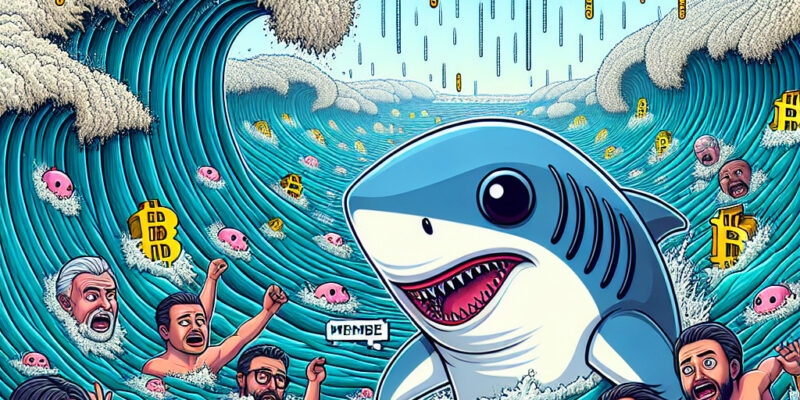Baby Shark-Inspired Meme Coin Crashes, Shattering Investor Dreams

In the ever-evolving world of cryptocurrencies, where fortunes can be made or lost in the blink of an eye, a rather intriguing narrative unfolded recently that left many investors grappling with disappointment. This story revolves around a meme coin that was inspired by none other than the infectious children’s tune, “Baby Shark.” However, what began as a venture filled with promise ended in a dramatic downturn, leaving a trail of shattered dreams in its wake.
At the heart of this story is a project known as Story Protocol, which ambitiously aimed to revolutionize the creation and distribution of intellectual property by likening it to building blocks—akin to Legos. The project’s bold vision was to democratize the way content is shared and monetized, allowing for creativity to flourish in a decentralized fashion. Yet, what works in theory doesn’t always smoothly translate to practice, particularly in a marketplace as unpredictable as the crypto space.
This particular meme coin garnered attention due to its playful nod to the “Baby Shark” phenomenon. For those unfamiliar, “Baby Shark” is a children’s song that became a viral hit, with an incredibly catchy tune that embedded itself in the minds of people globally. Investors, perhaps drawn in by nostalgia or the potential for quick gains frequently associated with meme coins, flocked to the token, hoping to ride the wave of its anticipated success.
However, the crypto market is notorious for its volatility, and the allure of quick profits comes with considerable risk. Despite the initial enthusiasm, Thursday brought a seismic shift in sentiment. The digital currency experienced a significant crash, much to the dismay of its holders. The plummet served as a sobering reminder of the inherent risks involved in crypto investments, especially those tied to trends that might be more ephemeral than enduring.
For Story Protocol, this incident highlighted the challenges of executing a concept that sounds great on paper but requires meticulous implementation and market acceptance. Their aim of transforming intellectual property into modular parts for creators to use might still hold potential, but the path to achieving such a vision is fraught with hurdles.
Meme coins, by their very nature, are speculative assets that capitalize on cultural moments and internet trends. While some have seen remarkable success, such as Dogecoin with its Shiba Inu mascot, others fail to maintain momentum once the initial excitement wanes. Investors must remain cautious and discerning, understanding that while the prospect of rapid returns is alluring, it is often accompanied by high risk.
Ultimately, the crypto domain resembles a high-stakes game of chance, where anticipation and apprehension coexist. As the dust settles from this recent crash, investors and creators are left to ponder the lessons learned. Perhaps there is value in the attempt to innovate and challenge the status quo, even if the outcome isn’t as rosy as hoped. For those involved, it’s a moment to reflect on the prospects of future projects and the fine balance between ambition and reality in the digital age.
And with that, as the sun sets on this chapter, one cannot help but wonder: What will be the next big idea to capture the imagination of this digital frontier? In this ecosystem of constant change, it’s only a matter of time before another trend emerges, carrying with it the hopes and dreams of a new wave of investors.













